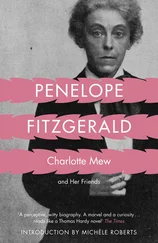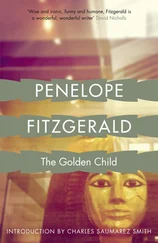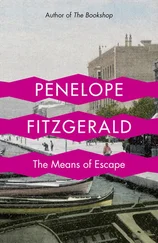I was fortunate when I began on this book to be given two meticulously kept series of letters: that of Chris Carduff, Penelope’s American editor at Addison Wesley and then at Houghton Mifflin, and that of J. Howard Woolmer, bookseller and bibliographer, who corresponded with Penelope about the Poetry Bookshop in Bloomsbury and who brokered the sale of her papers to the University of Texas. A third and most fascinating series was sent to me by Hugh Lee – known as ‘Ham’ for his perceived acting abilities – and covers the early war years when Penelope was just down from Oxford and working for Punch and then for the Ministry of Food. She had met Ham through her childhood friend, Jean Fisher. They formed part of a set of young Oxford graduates, the men training to be officers, those women who had not joined up drafted into the ministries. It was a time of amitiés amoureuses, with Penelope an ever-sympathetic confidante when these went wrong, and an unquenchable babbling brook of light-hearted, fantastic invention. The letters are full of gaiety and exuberance, and, despite the sombre times, are without the darker notes of her later writing. They give a rare glimpse of what the children’s generation never know about their parents: what they were like when they were young and silly and brimming with hope.
They break off about the time Penelope was falling in love with Desmond Fitzgerald, himself a recent Oxford graduate, and, like Ham’s group, a year younger than her. A few months after they married he went off to fight with the Irish Guards in North Africa. He was awarded the MC for holding Hill 212 in the face of terrible odds, a battle that led to the capture of Tunis. He would have received the Victoria Cross, but for the dreadful technicality that he was the only surviving officer. ‘It was lonely on that hill,’ he wrote later in his History of the Irish Guards, the hill now marked by a large white cross bearing the names of those killed there and the words Quis separabit? Ever after he suffered nightmares, and he found it difficult to adapt to civilian life.
Twenty-three years pass between the last letter to Hugh and the first to Tina, her elder daughter. There was never any distance between Penelope and the page, so that to read one of the flimsy blue airmail forms in her beautiful blue italic hand, one and a half pages with an arabesque border of afterthoughts, and every corner filled, was and is to feel her beside you. And, I wondered, thinking back to 1970, when I first read one over Tina’s shoulder, and remembering the delightful letter itself, and all it contained, how many of them she might have saved from all our travels and moves. Happily, there were a good many, scattered through drawers, cupboards and attics, interleaved with a miscellany of memories. They begin the year after Grace sank, when she was putting her life back together after eight years of free fall, and afford glimpses of her early literary adventures. We also see her imagination taking flight in her places of retreat: St Deiniol’s library in Hawarden, with its Burne-Jones connections, and the abbey on Iona, and on the package holidays she was now able to take, thanks to Desmond’s job with the travel firm Lunn Poly, despite the desperate scrimping – hair dyed with tea bags, Green Shield stamps saved for small comforts – that plagued her everyday life. We also get, as in the series of letters to her younger daughter, Maria, a most moving portrait of motherhood, which always took precedence over literature for Penelope.
I was talking one day to Maria about the (often furious) parental rows she remembers from the early years of her childhood, over bills unpaid, repossessions looming, and Desmond’s drinking, and about how secure the children nonetheless felt in the love of two kind, intelligent and funny people who simply couldn’t manage the world, despite their best efforts, so that it mattered less that they never knew where they would be living next, or where they would be going to school, there was a kind of adventure in it, when she suddenly absented herself and returned a little later from her cellar with a heavy black plastic bag. Inside was the complete set of letters her mother had written to her while she was up at Oxford, the only time in fact that they lived in different cities. All were in their postmarked envelopes, significant in that the letters are almost all undated as to year, and so exist in a seasonal but otherwise indeterminate present. There are two or three letters a week for each of her nine terms at the university and they provide an unusually detailed portrait of her state of mind at an unsettling period of her life when much was changing, and make on the whole for sadder reading than those to Tina:
‘Autumn: Departure of Daughters’
Oh my dark & light brown daughters
When you go to find new faces
Our place & me are put in our places
Our place may take what name it pleases –
It stares & stares, and all it sees is
That it is not a home.
Oh my dark & light brown daughters
When you go to find new places
Our place must face that it has no faces –
Tidiness, emptiness and peace is
All it has, and all it sees is
That it is not a home
Penelope put this poem away, in a drawer, without showing it to anyone, except these daughters. Its note continues to be sounded from time to time throughout the letters to her youngest child, the last to go away to find new places.
Now in her mid-fifties, she was working terribly hard: a full week’s teaching in two different jobs, three days at Queens Gate, Kensington, two days at Westminster Tutors, vast piles of exam-board marking as well as her own, with only Saturdays to spare for the mountainous research and writing of her first two books, the Burne-Jones and Knox Brothers biographies. After a difficult start (teaching R.E. at the stage school Italia Conti, remembered in At Freddie’s) she had become a valued and inspiring English teacher, the texts she was studying with her pupils – Jane Austen, but also Lawrence, Conrad, Forster, Joyce and Beckett, much modern poetry, philosophy, theory, history of art (we still have the tattered, meticulously annotated paperbacks) – all no doubt fuelling the future motor of her fiction. For, almost imperceptibly to her family, as she rarely spoke of work in progress, she was at last becoming what her old friends had always thought she would be: a writer, and this was confirmed by the acceptance of Edward Burne-Jones in 1973. It should have been an exciting and exhilarating time; intellectually and creatively it must have been, but personally it was a time of anxiety, loneliness and fear.
There had been ten years of comparative stability. Desmond and she had repaired their finances, made a rather stylish island home in their Clapham council flat, and seen their three children into and through Oxford. After the disasters of the previous decade, this had taken a great deal of persistence and bravery. Now they could say to each other: look, we have come through. A historian by training, he was able to help her in her research and they travelled happily together, at weekends and in the holidays, all over England, and to France, interviewing and absorbing atmospheres. In 1974 it became clear, though both delayed facing it (and their local GP was no help whatsoever), that Desmond was unwell. Penelope states barely in one of the later letters to Maria that she could not imagine living without one of her daughters nearby. The extent of her father’s illness, when it was eventually discovered, was kept hidden from Maria until she had completed her finals, but then she had to be told of his operation, in the reticent terms used in those days, which didn’t make anything any better.
Читать дальше

![Ally Carter - [Gallagher Girls 01] I'd Tell You I Love You But Then I'd Have to Kill You](/books/262179/ally-carter-gallagher-girls-01-i-d-tell-you-i-lo-thumb.webp)










